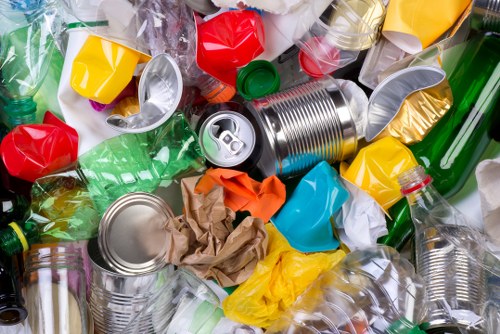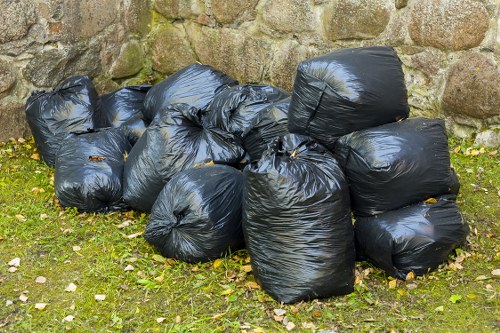Builders Waste Clearance in Rubbish Waste

Effective builders waste clearance is a critical aspect of any construction or renovation project. Managing and disposing of construction debris not only ensures a clean and safe work environment but also contributes to environmental sustainability. Proper waste clearance helps in minimizing the impact on the surrounding community and regulatory compliance.
Construction sites generate various types of waste, including concrete, bricks, wood, metals, and packaging materials. Without a systematic approach to waste management, these materials can accumulate rapidly, leading to potential hazards and increased project costs. Implementing a comprehensive rubbish waste clearance plan can streamline operations and enhance overall project efficiency.
Moreover, responsible waste clearance practices promote the recycling and reuse of materials, reducing the strain on landfill sites and conserving natural resources. By partnering with professional waste clearance services, builders can ensure that waste is handled in an eco-friendly manner, aligning with modern sustainability goals.
Understanding Builders Waste

Types of Waste in Construction
Construction projects produce a wide array of waste materials, each requiring specific handling and disposal methods. Understanding the different types of builders waste is essential for effective clearance and recycling.
Common types of construction waste include:
- Concrete and Masonry: Includes broken concrete, bricks, and tiles.
- Wood: Timber, plywood, and other wood products.
- Metals: Steel beams, aluminum, and copper wires.
- Plastics: Packaging materials, pipes, and insulation.
- Drywall and Plaster: Sheetrock and plaster remnants.
Proper classification and segregation of these materials facilitate efficient recycling processes and reduce the overall environmental footprint of construction activities.
Benefits of Professional Waste Clearance

Environmental Impact
Engaging professional waste clearance services significantly mitigates the environmental impact of construction projects. These services ensure that recyclable materials are processed appropriately, reducing the volume of waste sent to landfills.
Additionally, professionals are well-versed in the latest waste management regulations and can help builders adhere to local and national guidelines. This compliance not only avoids potential fines but also enhances the company's reputation as an environmentally responsible entity.
By leveraging advanced clearance techniques, waste management companies can transform demolition debris into valuable resources, promoting a circular economy within the construction industry.
Choosing the Right Waste Clearance Service

Factors to Consider
Selecting the appropriate builders waste clearance service involves evaluating several critical factors to ensure optimal results and value for money.
- Experience and Expertise: A seasoned service provider will have the necessary knowledge to handle diverse waste types efficiently.
- Licensing and Certification: Ensure the company complies with all regulatory requirements and holds relevant certifications.
- Recycling Initiatives: Opt for services that prioritize recycling and sustainable waste management practices.
- Cost-Effectiveness: Compare pricing structures to find a service that offers quality without exorbitant costs.
- Customer Reviews and Testimonials: Feedback from previous clients can provide insights into the service quality and reliability.
By meticulously assessing these factors, builders can partner with a waste clearance service that aligns with their project goals and sustainability objectives.
Waste Clearance Process

Step-by-Step Guide
Understanding the waste clearance process helps builders anticipate the workflow and ensure seamless integration with their project timeline.
- Initial Assessment: The waste clearance team evaluates the construction site to identify the types and volumes of waste generated.
- Segregation: Materials are sorted based on their nature and recycling potential, ensuring efficient processing.
- Collection: Sorted waste is carefully collected and transported to appropriate recycling facilities or landfill sites.
- Disposal and Recycling: Depending on the material, waste is either recycled, repurposed, or disposed of in an environmentally responsible manner.
- Final Cleanup: The site is thoroughly cleaned, leaving it safe and prepared for the next phase of construction.
Adhering to this structured process ensures that waste clearance is conducted systematically, minimizing disruptions and maintaining project momentum.
Cost and Pricing of Waste Clearance
Understanding the cost structure of builders waste clearance is essential for budgeting and financial planning. Prices can vary based on several factors, including the volume of waste, types of materials, and the complexity of the project.
Key components influencing pricing include:
- Volume of Waste: Larger projects generate more waste, leading to higher clearance fees.
- Material Types: Certain materials may require specialized handling, affecting the overall cost.
- Accessibility: Sites that are difficult to access may incur additional charges due to increased labor and equipment needs.
- Service Frequency: Regular clearance services might offer discounted rates compared to one-time pickups.
It's advisable to request detailed quotations from multiple service providers to compare costs and ensure transparency in pricing. Investing in quality waste clearance services can lead to long-term savings by preventing potential fines and enhancing operational efficiency.
Implementing Effective Waste Clearance Strategies
To maximize the benefits of builders waste clearance, adopting effective strategies is crucial. Here are some best practices:
- Early Planning: Incorporate waste management into the initial project plan to ensure seamless integration.
- Continuous Monitoring: Regularly assess waste generation and clearance effectiveness to make necessary adjustments.
- Employee Training: Educate staff on proper waste segregation and handling procedures to enhance compliance.
- Leverage Technology: Utilize software solutions for tracking waste generation and clearance schedules.
- Engage Stakeholders: Collaborate with suppliers and contractors to minimize waste at the source.
By implementing these strategies, builders can ensure efficient waste clearance, reduce costs, and promote sustainability throughout the construction process.
Conclusion: Achieving Sustainability through Waste Clearance
Effective builders waste clearance is more than just a regulatory requirement; it's a commitment to environmental stewardship and operational excellence. By partnering with professional rubbish waste clearance services, builders can ensure that their projects are not only successful but also sustainable.
Embracing comprehensive waste management practices leads to cleaner work environments, reduced environmental impact, and enhanced project efficiency. As the construction industry continues to evolve, prioritizing waste clearance will remain a cornerstone of responsible building practices.
Contact us today to ensure your construction project adheres to the highest standards of waste management and sustainability.



